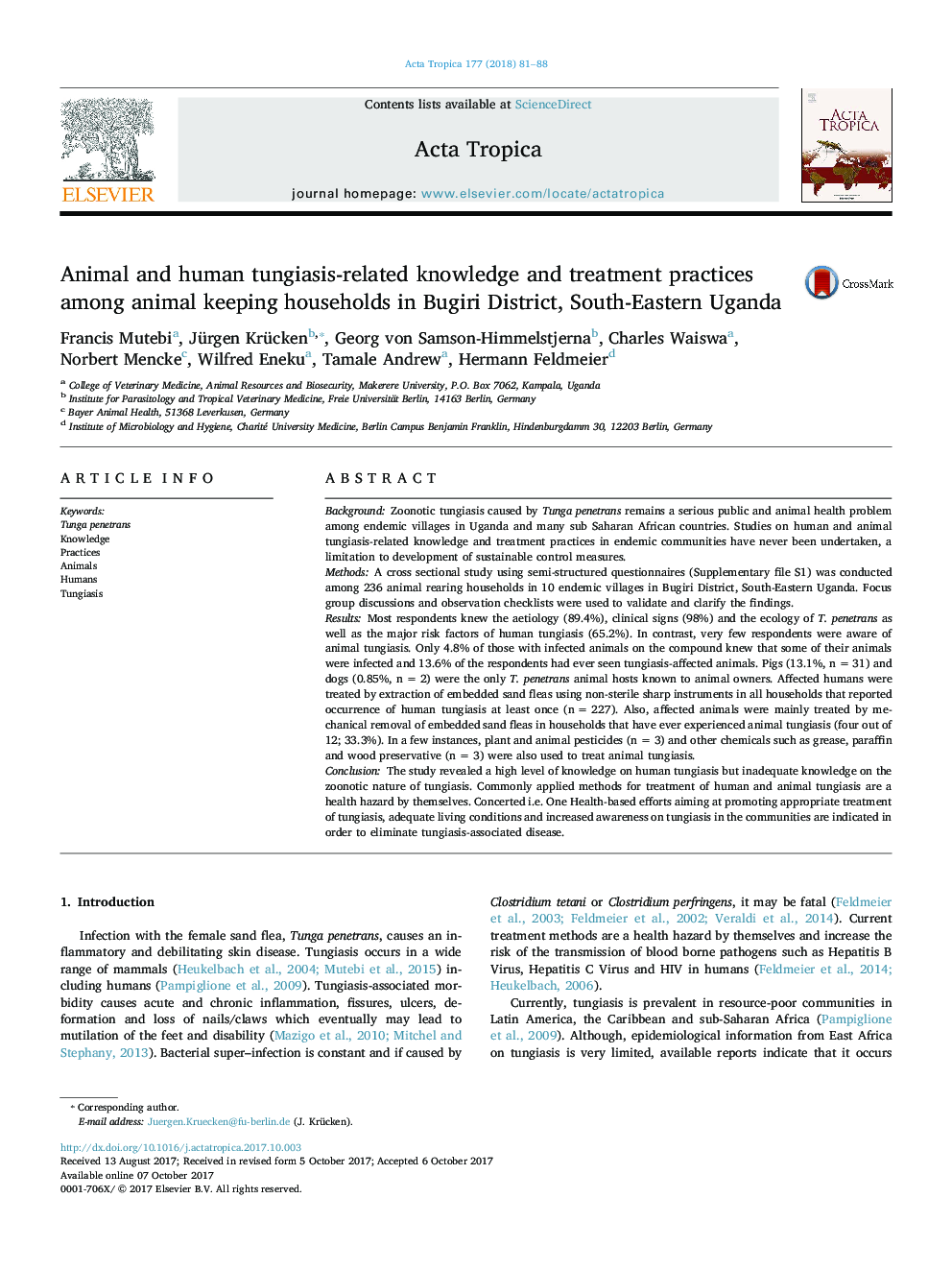| کد مقاله | کد نشریه | سال انتشار | مقاله انگلیسی | نسخه تمام متن |
|---|---|---|---|---|
| 5670987 | 1592747 | 2018 | 8 صفحه PDF | دانلود رایگان |
BackgroundZoonotic tungiasis caused by Tunga penetrans remains a serious public and animal health problem among endemic villages in Uganda and many sub Saharan African countries. Studies on human and animal tungiasis-related knowledge and treatment practices in endemic communities have never been undertaken, a limitation to development of sustainable control measures.MethodsA cross sectional study using semi-structured questionnaires (Supplementary file S1) was conducted among 236 animal rearing households in 10 endemic villages in Bugiri District, South-Eastern Uganda. Focus group discussions and observation checklists were used to validate and clarify the findings.ResultsMost respondents knew the aetiology (89.4%), clinical signs (98%) and the ecology of T. penetrans as well as the major risk factors of human tungiasis (65.2%). In contrast, very few respondents were aware of animal tungiasis. Only 4.8% of those with infected animals on the compound knew that some of their animals were infected and 13.6% of the respondents had ever seen tungiasis-affected animals. Pigs (13.1%, n = 31) and dogs (0.85%, n = 2) were the only T. penetrans animal hosts known to animal owners. Affected humans were treated by extraction of embedded sand fleas using non-sterile sharp instruments in all households that reported occurrence of human tungiasis at least once (n = 227). Also, affected animals were mainly treated by mechanical removal of embedded sand fleas in households that have ever experienced animal tungiasis (four out of 12; 33.3%). In a few instances, plant and animal pesticides (n = 3) and other chemicals such as grease, paraffin and wood preservative (n = 3) were also used to treat animal tungiasis.ConclusionThe study revealed a high level of knowledge on human tungiasis but inadequate knowledge on the zoonotic nature of tungiasis. Commonly applied methods for treatment of human and animal tungiasis are a health hazard by themselves. Concerted i.e. One Health-based efforts aiming at promoting appropriate treatment of tungiasis, adequate living conditions and increased awareness on tungiasis in the communities are indicated in order to eliminate tungiasis-associated disease.
Journal: Acta Tropica - Volume 177, January 2018, Pages 81-88
